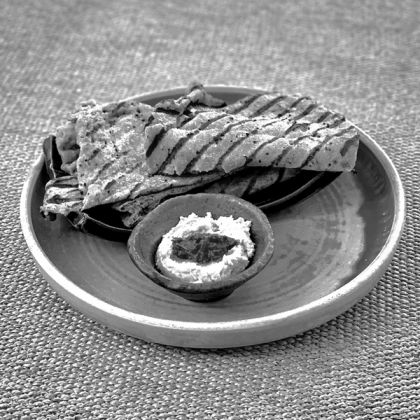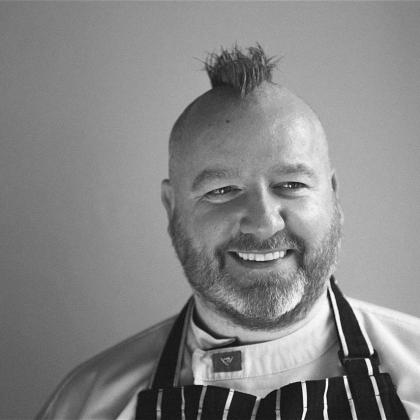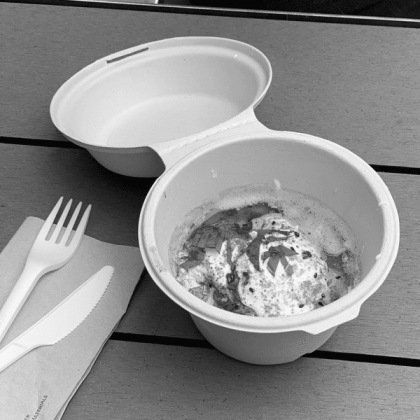In her fine book, “Dancing in the Streets: A History of Collective Joy”, the historian Barbara Ehrenreich notes that “suffering remains the almost exclusive preoccupation of professional psychology. Journals in the field have published forty-five thousand articles in the last thirty years on depression, but only four hundred on joy”.
As it is with psychology, so it is with food and eating, in forkfuls. The quickest online search will throw up two and a quarter million stories about food and health scares, but we don’t need to go online to know that: we need only listen to the news or open a newspaper.
We endure a daily bombardment of information from the health, safety and scientific lobbies that collectively paint the simple acts of cooking, eating and drinking as fraught adventures, latent with every imaginable threat, potent with risk. “What doesn’t make you fat will kill you in the end” often seems the only way to summarise this era’s collective hysteria over food scares, food fads and food follies. From the fat content of your breakfast roll all the way to the sulfites in your Cabernet Sauvignon, the only tenable aphorism for our modern food culture seems to be: caveat emptor – buyer beware.
Sensible people, of course, steer clear of the forty-five thousand articles, or the two and a quarter million stories, that tell us what not to do, and head straight for the four hundred sources that tell us where and how to find culinary joy. But the onslaught of bad food news creates a problem, in particular, for our children.
“What shall we tell the children”? is the first issue, especially when your teenage Conor and Sarah announce that they aren’t eating any more chicken-tofu-beef-carrots-sausages-salad leaves-eggs on account of the latest news about GMOs-avian flu-pesticide residue levels-FMD or whatever it may be that has risen to the surface of contemporary concerns, and which has sparked into protest their natural fretfulness. You can try to be rational and reasonable and balanced and well-informed, but convincing that stubborn teenage mind that the sausages are safe and eggs are salmonella-free is no easy task. Children get informed by the media first, and by their parents second.
But a bigger issue for our children is, surely, the steady erosion of the concept of joy that should, rightfully, be derived from cooking and eating.
Fifteen years ago, the great chef-intellectual of the Irish kitchen, Gerry Galvin, wrote that “Children should be nurtured to inventive eating from an early age. We should teach them to eat as we teach them to read or play music. It requires patience, perseverance and love”.
Today, it would appear we nurture them to worry about food from an early age. Where do we hear the voices telling children that understanding and enjoying food, and being able to cook with it in an inventive way, is one of the primary creative functions of any human being? Books are on the curriculum big time, and playing music is the bee’s knees for any child, but who informs them that cooking is the best and most immediate means of self-expression open to any individual, and that preparing and sharing food is the cornerstone of any concept of community?
Food educates us in every skill and discipline – trade, economics, sensory appreciation, the visual arts, judgement, and it is freighted with mathematical and scientific enquiry: if you are prone to say that “Cooking isn’t rocket science”, then can I suggest you go and make a cheese soufflé, and have your mind changed in the process. Cooking is both art, and science, but the problem is simply that we teach the science, but not the art.
The onslaught of scares, and the yawning lack of common sense, has meant a devaluation of the culture of food, creating a widespread sense of suspicion amongst young people, and suspicion is the enemy of joy and pleasure. For a previous generation, the problems that were taking us to hell in a handcart were The Bomb, and Sex. Substitute Global Warming and Food, and you have today’s scary monsters.
If common sense was more common, then our children would see the stream of food scares as the disconnected junk science so much of it is. We need to teach our kids to eat, as Gerry Galvin said, and in teaching them to give them the confidence to edit and understand the scares, and consequently to enjoy the creativity of cooking, and the joy of the table.
As it is with psychology, so it is with food and eating, in forkfuls. The quickest online search will throw up two and a quarter million stories about food and health scares, but we don’t need to go online to know that: we need only listen to the news or open a newspaper.
We endure a daily bombardment of information from the health, safety and scientific lobbies that collectively paint the simple acts of cooking, eating and drinking as fraught adventures, latent with every imaginable threat, potent with risk. “What doesn’t make you fat will kill you in the end” often seems the only way to summarise this era’s collective hysteria over food scares, food fads and food follies. From the fat content of your breakfast roll all the way to the sulfites in your Cabernet Sauvignon, the only tenable aphorism for our modern food culture seems to be: caveat emptor – buyer beware.
Sensible people, of course, steer clear of the forty-five thousand articles, or the two and a quarter million stories, that tell us what not to do, and head straight for the four hundred sources that tell us where and how to find culinary joy. But the onslaught of bad food news creates a problem, in particular, for our children.
“What shall we tell the children”? is the first issue, especially when your teenage Conor and Sarah announce that they aren’t eating any more chicken-tofu-beef-carrots-sausages-salad leaves-eggs on account of the latest news about GMOs-avian flu-pesticide residue levels-FMD or whatever it may be that has risen to the surface of contemporary concerns, and which has sparked into protest their natural fretfulness. You can try to be rational and reasonable and balanced and well-informed, but convincing that stubborn teenage mind that the sausages are safe and eggs are salmonella-free is no easy task. Children get informed by the media first, and by their parents second.
But a bigger issue for our children is, surely, the steady erosion of the concept of joy that should, rightfully, be derived from cooking and eating.
Fifteen years ago, the great chef-intellectual of the Irish kitchen, Gerry Galvin, wrote that “Children should be nurtured to inventive eating from an early age. We should teach them to eat as we teach them to read or play music. It requires patience, perseverance and love”.
Today, it would appear we nurture them to worry about food from an early age. Where do we hear the voices telling children that understanding and enjoying food, and being able to cook with it in an inventive way, is one of the primary creative functions of any human being? Books are on the curriculum big time, and playing music is the bee’s knees for any child, but who informs them that cooking is the best and most immediate means of self-expression open to any individual, and that preparing and sharing food is the cornerstone of any concept of community?
Food educates us in every skill and discipline – trade, economics, sensory appreciation, the visual arts, judgement, and it is freighted with mathematical and scientific enquiry: if you are prone to say that “Cooking isn’t rocket science”, then can I suggest you go and make a cheese soufflé, and have your mind changed in the process. Cooking is both art, and science, but the problem is simply that we teach the science, but not the art.
The onslaught of scares, and the yawning lack of common sense, has meant a devaluation of the culture of food, creating a widespread sense of suspicion amongst young people, and suspicion is the enemy of joy and pleasure. For a previous generation, the problems that were taking us to hell in a handcart were The Bomb, and Sex. Substitute Global Warming and Food, and you have today’s scary monsters.
If common sense was more common, then our children would see the stream of food scares as the disconnected junk science so much of it is. We need to teach our kids to eat, as Gerry Galvin said, and in teaching them to give them the confidence to edit and understand the scares, and consequently to enjoy the creativity of cooking, and the joy of the table.






